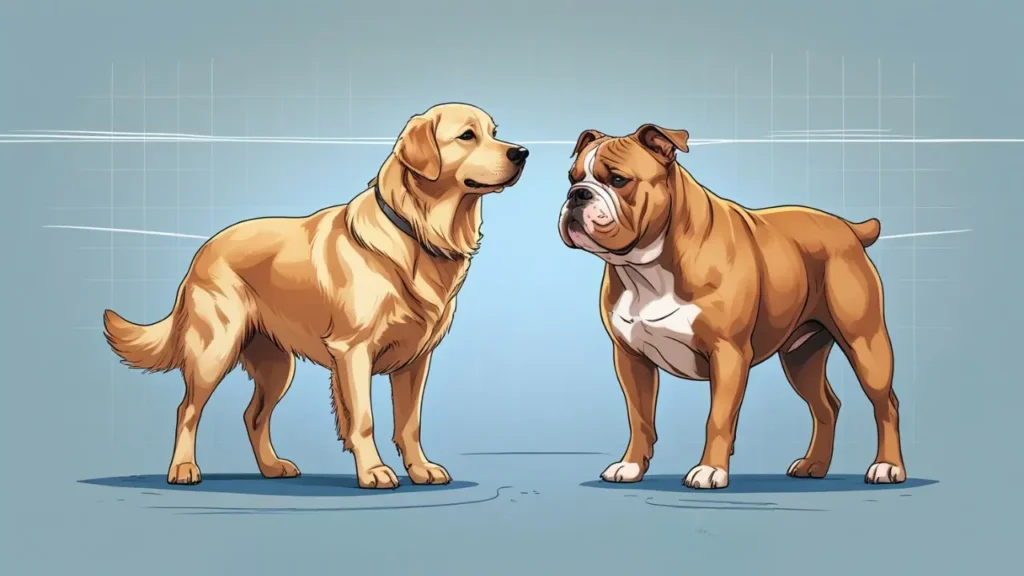Trembling with normal impulses is harmless. But if the trembling is persistent or severe, it could be a sign of an underlying medical condition. In this article, we’ll explore the various reasons why dogs tremble, ranging from physical factors to emotional triggers. We’ll also discuss how to identify the cause of your dog’s trembling and the best ways to manage and treat it.
5 Signs of Trembling in Dogs
Trembling looks different in every dog. It depends on factors such as the cause, breed, and age. A dog trembles or shakes for various reasons, so it’s important to observe the behavior in conjunction with other symptoms to pinpoint the root cause.
Shaking of the Entire Body: Some dogs will shake from head to tail. This can happen when a dog is scared, stressed, or simply cold. The dog’s body might appear tense or stiff, in addition to the shaking. This can be a sign of anxiety, fear, or physical discomfort. Dogs may exhibit increased movement, such as pacing, walking in circles, or an inability to settle down.
If it’s not related to a medical condition, this general body trembling is usually temporary.
Localized Shaking: A dog might shake in one part of its body, like the head, legs, or back. Localized shaking can indicate pain, muscle weakness, or neurological issues. Older dogs or those with joint problems like hip dysplasia may experience shaking in one or more limbs due to pain or inflammation.
Shaking or trembling of the dog’s head, sometimes accompanied by a tilt or twitching. Severe toothaches or oral issues can sometimes cause localized head shaking. Dogs may also shake their tails when they’re overly excited or frightened, particularly in response to specific stimuli. Conditions like intervertebral disc disease (IVDD) can cause localized shaking in the back or neck area.
Twitching or Muscle Spasms: Twitching in dogs manifest sudden, involuntary movements in the dog’s muscles. This type of movement is different from normal shaking or trembling. These twitches can occur anywhere in the dog’s body, including the face, limbs, or torso, and may vary in intensity.
Twitching is often a sign of a neurological issue, but it can also be caused by several other factors, including pain, stress, or metabolic imbalances.
This could be caused by conditions like epilepsy, tremor syndromes, or even internal injuries.
Teeth Chattering: Teeth chattering is normal in cold weather. Excessive teeth chattering is a possible sign of anxiety, fear, or nausea. Motion sickness occurs when the dog’s inner ear is overstimulated by movement. It could also point to an underlying health issue, such as poisoning or infection.
One of the common reasons for teeth chattering in dogs is exposure to cold temperatures. Pain from an injury, inflammation, or internal health issues like gastrointestinal problems or dental issues can trigger stress responses, including teeth chattering. It can also happen when the body is fighting off an infection or when the fever reaches a certain level.
Pacing and Restlessness: Dogs that are trembling from stress or anxiety may pace in circles, exhibit drooling, or display other signs of unease. If it’s linked to illness or pain, you might notice the dog becoming less active, seeking a specific spot, or showing signs of discomfort.
Anxiety is one of the common causes of pacing in dogs. In cases of gastrointestinal upset, the dog pace because of nausea, bloating, or discomfort. Neurological conditions, such as brain tumors, seizures, or degenerative diseases, can lead to confusion, disorientation, and pacing. These disorders affect the dog’s ability to recognize its surroundings or respond to stimuli appropriately.
9 Causes of Trembling in Dogs

Cold
Smaller dogs, elderly dogs, and those with thin coats or little body fat are more susceptible to the cold and may begin to tremble in response. Some dogs naturally shake to generate body heat. This involuntary muscle movement generates warmth to help raise the body temperature.
Blood vessels in the skin and extremities constrict (vasoconstriction) during cold to minimize heat loss. This leads to less blood flow to the muscles, and as a result, the muscles tremor involuntarily.
Breeds like Chihuahuas, Greyhounds, Dachshunds, and Whippets are particularly sensitive to cold due to their size, low fat reserves, and thin coats.
Fear and Anxiety
Dogs often tremble in response to stressors such as thunderstorms, fireworks, car rides, new environments, or even separation from their owners.
If a dog shakes when left alone or in a new environment, it may have separation anxiety, which is quite common in dogs that form strong bonds with their owners. Other signs of separation anxiety include excessive barking, destructive chewing, and inappropriate urination or defecation.
If your dog is frightened by certain noises (like fireworks), desensitization and counter-conditioning might help. This process involves gradually exposing your dog to the source of fear in a controlled manner and rewarding calm behavior.
Pain or Discomfort
Dogs that are in pain from conditions like arthritis, injury, dental issues, or abdominal discomfort might shake. Dogs don’t always vocalize when they’re in pain, so trembling can be an indicator.
Some chronic health conditions like hip dysplasia or inflammatory bowel disease (IBD) can cause recurring discomfort and trembling. In these cases, treatment may involve pain management and addressing the underlying condition.
Excitement or Anticipation
When dogs get excited, their bodies release adrenaline and other stress hormones. These chemicals prepare the dog for running, playing, and engaging in other fun activity. The increased adrenaline and arousal cause involuntary muscle contractions, which manifest as trembling or shaking.
Puppies treble seeing their owner come home, anticipating a treat. They have less control over their emotions. So, their trembling is more intense or frequent.
While excitement tremors are usually short-lived and tied to a specific event, anxiety-related trembling tends to last longer and can occur without an obvious cause.
Toxins or Poisoning
Trembling can be a sign of poisoning from different substances. Below are some common toxins that can lead to trembling:
Chocolate: Chocolate contains theobromine and caffeine, both of which are stimulants that affect the nervous system.
Grapes and Raisins: Even small amounts of grapes or raisins can cause kidney failure in some dogs, leading to tremors, lethargy, vomiting, and diarrhea.
Onions and Garlic: These common kitchen ingredients contain compounds that can damage a dog’s red blood cells, leading to hemolytic anemia.
Antifreeze (Ethylene Glycol): Antifreeze is highly toxic to dogs, even in small amounts.
Xylitol: This artificial sweetener, commonly found in sugar-free gum, candy, and baked goods, is highly toxic to dogs.
Many toxins directly affect the central nervous system, leading to symptoms like trembling, seizures, disorientation, and paralysis. The tremors are due to overstimulation of the nervous system.
If poisoning is suspected, seek veterinary attention immediately. Do not wait for additional symptoms to appear. Many poisons can be fatal, so prompt treatment is essential.
Low Blood Sugar (Hypoglycemia)
Hypoglycemia occurs when the balance between the body’s insulin production, glucose intake, and energy expenditure is disrupted. Small breeds, puppies, and dogs with diabetes are more likely to experience hypoglycemia. Hypoglycemia causes shaking, weakness, and lethargy.
Dogs that have spent an active time without adequate intake of food burn through their energy reserves more rapidly. This leads to a dip in blood sugar. Diabetic dogs receiving insulin injections may experience hypoglycemia if the dosage is too high. Certain health conditions, such as liver disease or adrenal gland insufficiency (Addison’s disease), can interfere with a dog’s ability to maintain normal blood sugar levels.
Offering a small amount of honey or syrup can raise your dog’s blood sugar quickly. If hypoglycemia is recurrent, working with your vet to create a more balanced feeding schedule or considering insulin adjustments is key.
Neurological Disorders
Dogs with epilepsy may have seizures that present as shaking or convulsions. Seizures typically last from 30 seconds to 2 minutes and can cause loss of consciousness, drooling, and involuntary muscle movements.
Idiopathic (or essential) tremors in dogs are often seen in older dogs and can result in shaking of the head or limbs. These tremors are not typically associated with pain or other symptoms but can worsen over time.
Dogs suffering from brain tumors, spinal cord issues, or nerve damage exhibit shaking or tremors along with coordination problems or difficulty walking.
Infections or Fever
A fever caused by infection can lead to trembling. Dogs with fever may exhibit other symptoms such as lethargy, loss of appetite, vomiting, or diarrhea.
When the body raises its temperature to fight infection, it may need to generate additional heat. Shivering is a mechanism to increase temperature when it is colder than the new set-point.
During fever, the body ramps up its metabolic activity to combat the illness. This increased activity causes the muscles to tremble or spasm. Fever sometimes causes dehydration. Dehydration exacerbates trembling, as the body struggles to maintain balance and regulate temperature properly.
If your dog shows signs of illness, including tremors, and has a fever (a temperature above 103°F or 39.4°C), it’s important to get them to the vet for an accurate diagnosis and treatment.
Old Age and Degenerative Diseases
Older dogs develop tremors due to age-related changes in their nervous system. Conditions like cerebellar ataxia (a disorder that affects coordination) or canine cognitive dysfunction (similar to dementia in humans) can lead to shaking.
While some age-related tremors cannot be cured, there are ways to manage symptoms. Anti-inflammatory medications, joint supplements, and cognitive aids might help older dogs live more comfortably.
5 Effective Coping Strategies for Trembling in Dogs

Managing Cold Weather
Small AND short-haired breeds have less insulation against the cold and can easily become chilled or hypothermic. Winter clothing is particularly helpful in ensuring your dog stays warm during outdoor excursions. Sweaters or jackets are a great way to protect them from cold temperatures. Look for materials like fleece, wool, or thermal fabrics that are designed to trap body heat.
Boots help safeguard their paws from the harsh winter elements, such as ice, snow, and road salt. Snow causes irritation to a dog’s paws, and salted roads leads to burns or cracks in the pads. If you take your dog out for walks in the winter, keep the walks short and limit exposure to extreme cold.
Helping an Anxious Dog
Helping an anxious dog requires a combination of behavioral techniques, environmental adjustments, calming products and supplements.
For anxiety-related tremors, you can try using calming products like:
Adaptil collars and diffusers: These release calming pheromones that mimic a mother’s scent and can help ease anxiety.
Thundershirts: These provide gentle pressure to the dog’s torso, which can have a calming effect.
Calming supplements: Natural remedies like melatonin, valerian root, or CBD oil can sometimes help reduce anxiety.
If the trembling is due to fear or anxiety, working with a certified dog trainer or a behaviorist can help. Training focuses on desensitizing your dog to the fearful stimulus and teaching relaxation techniques.
Pain Relief and Comfort
Pain in dogs arises from various sources, such as injuries, surgery, arthritis, or illness. Once the cause is determined, the vet will tailor a treatment plan to relieve the pain and support your dog’s healing process. Nonsteroidal anti-inflammatory drugs (NSAIDs), opioids, corticosteroids, or gabapentin may be prescribed to reduce pain and inflammation. For localized pain, such as joint or muscle soreness, topical creams or patches may be used.
Hydrotherapy, or water therapy, is a common and highly effective form of physical therapy for dogs with pain. The buoyancy of water reduces stress on the joints and allows for low-impact movement. Therapeutic massage and gentle stretching exercises help alleviate muscle tightness, improve circulation, and ease pain.
A personalized rehabilitation program tailored to your dog’s specific needs can improve strength, flexibility, and mobility, which is beneficial after surgery, injury, or for dogs with degenerative joint conditions.
Monitor and Record
Keeping track of when and how often your dog trembles, as well as any other symptoms, can be extremely helpful for your vet. Write down any food changes, stressors, or environmental factors that coincide with the trembling.
Keep a record for trembling in dogs to take action when necessary. Identifying whether the cause is related to cold, anxiety, pain, or something more serious will guide your next steps. If you ever feel uncertain, especially if the trembling is frequent, severe, or associated with other concerning symptoms, seeking veterinary care is always the best course of action.




